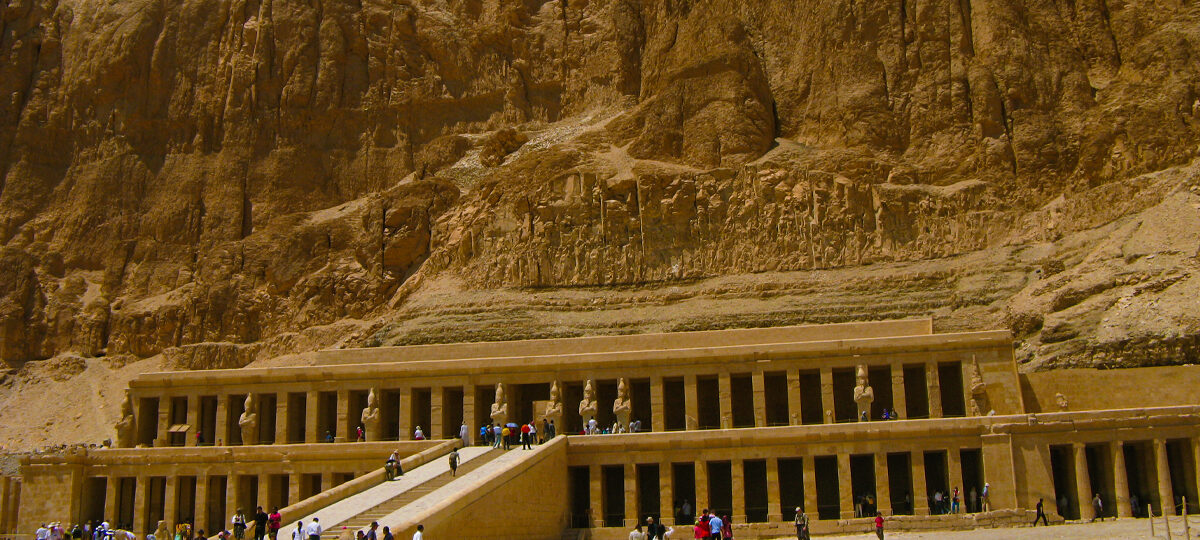Luxor City in Egypt
The city of Luxor in Egypt was built on the ruins of Waset which was the capital of the New Kingdom and the seat of the Fourth Nome of Upper Egypt. The Greeks changed the name of Waset to Thebes (the Greek city). It is on the eastern bank of the Nile, about 200 kilometers north of the first waterfall (Aswan). In 2006, 451,318 people lived there Luxor was one of Egypt’s most important cities in the past.
Because there are so many temples there, Homer, who wrote the Iliad, called it “the city with 100 gates.” This city is still one of the most impressive places to live in the world The area south of Cairo The city of Luxor is in the Nile Valley, about 670 km from the first waterfall, and not too far from the second waterfall. The river pretty much cuts the city in half. In the summer, Luxor’s temperatures often go over 40 degrees Celsius, which is the same as everywhere else in Egypt. The best time to go to Egypt is [here are more details].
People in Luxor, Egypt, work only in the tourism business, though some also work in agriculture. Both the eastern and western coasts have things to do that have to do with ancient Egypt. Some people have called it the “biggest open-air museum in the world,” which seems about right.
A big international airport is in the city of Luxor.

Before, the river could only be crossed on rafts. To make it easier to get from one side of the river to the other, a new bridge was built a few kilometers outside of the center of Luxor The station closest to the Luxor Temple is about two kilometers away, and trains leave twice a day, in the morning and in the evening. Cairo, which is the capital of Egypt, and Aswan, which is Egypt’s second-largest city, are two of the stops.
Luxor’s tombs.

On the western bank, which was once called Thebes West, you can find the huge Valley of the Kings, which is a cemetery with 62 structures. There you can find the tombs of Tutankhamun, Ramesses IX, Ramesses III, Seti I, Ramesses VI, Horemheb, and others. During his rule, the New Empire slowly stopped building pyramids and started building underground tombs with many rooms instead. The Valley of the Kings shows what life was like during this time. The Valley of the Queens is in the southwest corner of this building. Even though the area doesn’t look as nice as the Valley of the Kings, important Egyptians like Prince Amenkhepchef, Queen Tiye, and Queen Nefertari were buried there.
Temples and Mosques in Luxor.

Between 1500 and 1200 B.C., Amenhotep III and Ramses II gave the order to build the Luxor Temple. The building was changed by other pharaohs, including Tutankhamun. It was built for the god Amon and amazes people with its beautiful columns, a tall obelisk, and statues of Ramses II. The temples of Luxor and Karnak were connected by a 3 km-long street lined with sphinxes. [Take a look at our trips to Luxor.]
Luxor Famous Attractions:
Karnak Temple.

Egyptians have thought of Karnak as the holiest place in their country for hundreds of years. Its main temple was for the sun god Amun-Ra. [Read more about Egyptian gods.] Around 4,300 years ago, Intef II, the ruler of the Eleventh Dynasty, gave the order to build the beautiful temple. Nearly 200 buildings are known to be inside the sanctuary. The pharaohs added to and fixed up the buildings over many centuries. Here are the most interesting things about the complex How Karnak and its amazing temple came to be
Hatshepsut’s temple.

The Temple of Hatshepsut is a well-known and beautiful building in Egypt. It is part of the Deir el Bahari complex, which is not far from the Valley of the Kings. It was built to honour the sun god Amon-Ra, and its walls tell the story of one of Egypt’s rare royal queens. The temple is high up on a mountain, and the only way to get there is along a road with 12 sphinxes and a ramp that leads to a wide terrace. At the far end of this area, beautiful statues of the queen stand guard high-end vacation, Pyramid of Cheops, Luxor, Egypt Tourist.
The Valley of the King.

Most of the New Kingdom pharaohs are buried on the west bank of the Nile in a beautiful cemetery. The paintings and carvings on the tomb walls are works of art, and it’s amazing how much of their original color and life they’ve kept over the years. One of them is the tomb of Tutankhamun.
The Mummification Museum and the Museum of Luxor.

If you’ve already seen the mummification exhibit at the Egyptian Museum in Cairo, you might not need to go to the Mummification Museum in Luxor. But I’ve included it because it’s a museum with a lot of mummies and a good explanation of how mummies are made.
Nile River Felucca Ride.

Every trip to Aswan is made better by a ride on a felucca down the famous Nile River. Find out about the area around Banana Island. With the Nile Felucca Tour, you can see Luxor from a different point of view. Felucca Nile Cruise Reservations

